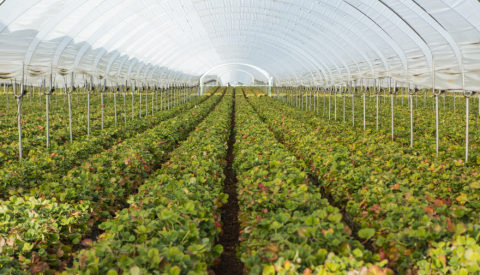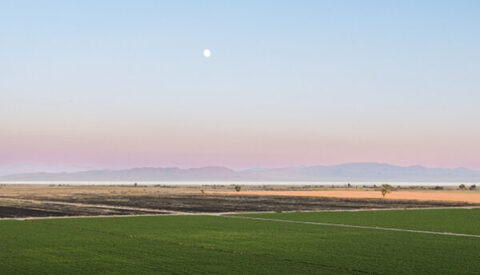In this Issue: Population aging began in the 1970s and accelerated in the 2010s. Population aging, even sooner than population decline, will change demand for agricultural products. Producers may need to shift their focus from quantity to quality and diversity to adapt as consumers age. An aging population can substantially influence the demand for agricultural products, since food spending generally follows a known pattern: younger and older households tend to spend less on food while middle-aged households spend more. As population aging occurs globally, there could be a dampening effect on overall food demand as more people enter their golden years. While the analysis in this report focuses on the U.S., we believe these food spending patterns hold overseas as well, meaning they are likely to affect demand for U.S.-produced agricultural products globally. The consequences to U.S. farmers and ranchers could mean that they would be better off focusing the future of their business on the quality of the products they produce relative to quantity of crop and livestock products grown or raised. Aging By Numbers The model built for “The Big Shrink” and described in more detail in the report “How Will Agriculture Navigate the Baby Bust?” not only helps forecast global population trends; it also provides a current and future age distribution. To gauge aging over time, we focus on the old age dependency ratio, a common metric comparing the population 65 and older to the working-age population (15-64). The data indicate that aging started slowly in the 1970s and then accelerated in the 2010s. Projections from our model indicate that for every one person of retirement age, there will be approximately two working-age people globally by the end of the century. This contrasts with the current ratio where there are approximately six working-age people for every one person of retirement age. While the entire world is getting older, the degree of aging differs by continent according to our projections: By the end of the century, Europe, Latin America and the Caribbean, and Asia are expected to have some of the oldest populations, with ratios reaching or exceeding 70 percent – meaning the population over the age of 65 is closely approaching the working age population. Northern America and Oceania are projected to undergo less dramatic aging by 2100, with ratios around 60 percent. Africa will continue to be the youngest continent but is projected to see its ratio rise from approximately 6 percent today to 25 percent by 2100. An aging population is likely to influence many variables throughout the economy and not just healthcare and retirement costs. A recently published study, for example, found that a 10% increase in the fraction of population 60 and over decreases GDP per capita by 5.5%. As a result, tax revenues, government spending, labor productivity and labor availability also are all areas of concern. Consequently, agricultural markets may feel the effects of aging through indirect channels such as continued labor shortages and reduced long-term productivity. The Lifecycle of Food Demand While a shrinking population clearly means less agricultural demand, so might an aging one given that households (and individuals) tend to spend less on food and change the composition of their grocery basket as they get older. The bell-shaped food spending curve best illustrates this. According to the Bureau of Labor Statistics’ Consumer Expenditure Survey: young households spend little on food, middle-aged households spend the most, and older households also spend less. Between 2019 and 2023, household heads aged 25-34 spent an average of $6,322 annually on food, those aged 45-54 spent $12,287, and those over 75 spent $6,501. The breakdown of this spending into average expenditure for protein, fruits and vegetables, cereals, dairy products, and alcohol 1 by age shows a similar pattern. Though data shown is for age of respondent at household level, the pattern holds for individuals as well. While food spending increases with income over time for every age group, older households tend to spend less at almost every income level. The shift in food spending is due to several factors. For starters, income changes predictably throughout the lifecycle, which inevitably affects spending patterns at different ages. Young Americans are just starting their careers, middle-aged individuals are typically at peak earnings 2 , and retirees are often on fixed incomes. This is reflected in the numbers shown in the 2023 Consumer Expenditure Survey numbers where the respective mean household after-tax incomes are about $50,000 for those under 25, $100,000 to $120,000 in middle age, and $50,000 for those 75 years old and older. Other factors for older adults’ food spending patterns are reduced appetites due to slowing metabolisms, declines in physical activity, and opting for healthier diets as they encounter various health challenges. While food spending increases with income over time for every age group, older households tend to spend less at almost every income level. According to a USDA food consumption survey, however, the change in quantity consumed may vary by food category. While older individuals generally consume a lower quantity of food overall—cutting back on protein, grains, dairy and alcohol—they increase their intake of fruits and vegetables despite spending less on every food category. 3 Due to data limitations, it’s difficult to say for sure that these spending patterns extend to every country, but our reading of the international data suggests that it does. While aging has been continuing for decades, it will accelerate very soon according to projections. Not only could there be a dampening in food demand at home as “The Big Shrink” develops, but U.S. agricultural exports could experience a softening in demand due to aging population well before we’ve hit global population peak. Farmers and ranchers in the U.S. should be prepared for what this demographic trend might bring, which may come sooner than expected. A New Paradigm Before the global population declines after 2065, it will age significantly first. While aging has been continuing for decades, it will accelerate very soon according to projections. As older consumers spend less on food, global aggregate food spending might weaken before the population begins to shrink. The composition of food demand is also likely to change due to an aging population. While elderly households tend to spend less on every category of food as they age, survey data suggests that they consume a reduced quantity of everything except for fruits and vegetables, where quantities increase. The composition of food demand is also likely to change due to an aging population. While elderly households tend to spend less on every category of food as they age, survey data suggests that they consume a reduced quantity of everything except for fruits and vegetables, where quantities increase. Preparing for this paradigm shift is bound to look different depending on the product. For example, in beef or wine, where there are already distinct quality levels, the transition could be simpler compared to various specialty crops, dairy and grains. The last 50 years for these commodities were all about quantity. Given our analysis, it’s quite possible that the next 50 years are all about quality and diversification. Endnotes 1,2 The Bureau of Labor Statistics Consumer Expenditure Survey, https://www.bls.gov/cex/. What We Eat in America Survey from USDA/NHANES https://www.ars.usda.gov/northeast-area/beltsville-md-bhnrc/beltsville-human-nutrition-research-center/food-surveys-research-group/docs/wweianhanes-overview/.
More Articles
See All InsightsOrtega Berry Farms grew from modest beginnings. Edward and Carlos Ortega’s parents, Alfredo and Josefina, first came to the United States from Mexico and eventually arrived in Watsonville, California, working as sharecroppers in the strawberry fields.
The term “stagflation” continues to make headlines and weigh on consumers. Since March, more than 40% of consumers in the University of Michigan Survey of Consumers
SANTA ROSA, Calif., (June 24, 2024) – The farmers and ranchers who own American AgCredit elected Steven Van Houten to the cooperative’s board of directors. Van…



